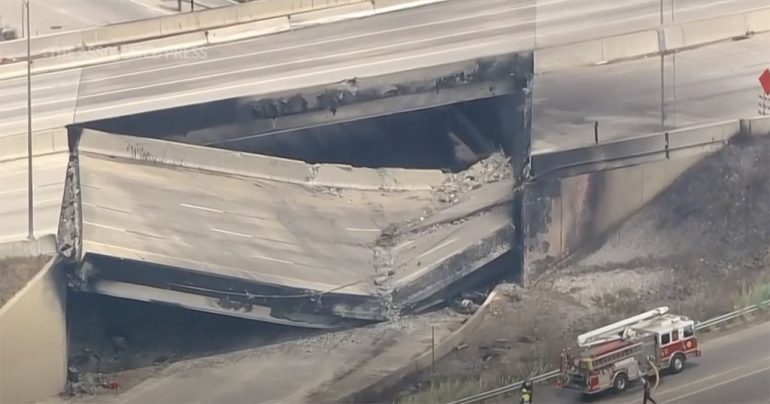
In Philadelphia, commuters faced significant traffic delays on Monday following the collapse of an elevated section of Interstate 95. The collapse was caused by a tanker truck carrying flammable cargo catching fire on Sunday, leading to the closure of a heavily traveled segment of the main north-south highway on the East Coast. Local news broadcasts warned drivers of traffic nightmares and advised them to consider alternative routes and allow for additional travel time.
According to AAA spokesperson Jana Tidwell, the impact of the incident would have a ripple effect throughout the region. Tidwell suggested avoiding peak travel times to minimize congestion. She also noted that drivers would likely incur additional costs due to increased fuel consumption, added wear and tear on their vehicles, and additional tolls when traveling between Pennsylvania and New Jersey.
Also, don’t forget that you can get discounted new car pricing with a free quote through qualified local dealer partners.
To alleviate the transportation challenges, the Southeastern Pennsylvania Transportation Authority announced the operation of three extra morning and late afternoon trains on its Trenton, New Jersey, line. They also planned to increase capacity on regularly scheduled lines during peak hours to support the travel needs of the city and the region.
Transportation officials issued warnings about extensive delays, street closures, and advised drivers to avoid the affected area in Philadelphia’s northeast corner. The tanker truck involved in the incident was carrying a petroleum product, possibly hundreds of gallons (hundreds of liters) of gasoline, which took approximately an hour to bring under control. The northbound lanes of I-95 collapsed completely, while the southbound lanes were compromised by the fire’s heat. Additionally, underground explosions may have occurred due to runoff from the fire or broken gas lines.
The collapse was triggered by a crash on a ramp underneath the northbound section of I-95, causing a massive concrete slab to fall onto the road below. Pennsylvania Governor Josh Shapiro expressed relief that no motorists were injured or killed during the incident and described the extent of the damage as remarkable.
The collapsed portion of I-95 had undergone a $212 million reconstruction project four years prior to the incident. The daily traffic volume on this segment was approximately 160,000 vehicles, making it one of the busiest interstates in Pennsylvania.
Governor Shapiro confirmed that he had spoken with U.S. Transportation Secretary Pete Buttigieg, who assured him that federal funds would be promptly provided for the safe and efficient reconstruction of the critical roadway. However, Shapiro acknowledged that the complete rebuild of I-95 would take several months. In the meantime, officials were exploring interim solutions to restore connectivity between the two sides of I-95 and facilitate traffic flow in the affected area.
The National Transportation Safety Board announced that a team would be sent to investigate the fire and collapse. Environmental concerns also arose due to runoff into the nearby Delaware River. In response, the Coast Guard deployed a boom to contain any potential material leakage. Although the tanker had a capacity of 8,500 gallons (32,176 liters), there were no indications of significant environmental contamination at that time.
Interestingly, the incident bore similarities to a fire that occurred in March 1996 when an illegal tire dump under I-95 in Philadelphia caught fire, resulting in melted guard rails and buckled pavement.
Source: APNews